
Concepts
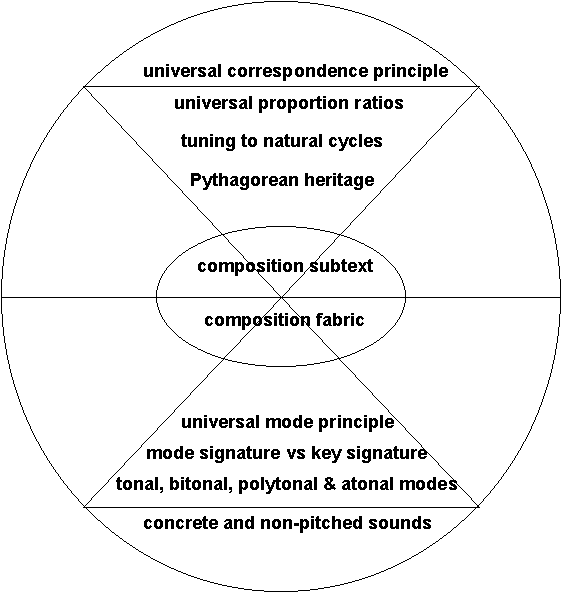
There are two levels in my composition work: the subtext and the fabric. The subtext is usually based on some type of universal correspondences matrix, as shown in the following examples. This provides my basic framework for sequences of events, key signatures, general structure.
The composition fabric or texture can be extremely varied. It can include concrete and "sounds" from everyday life, vocals in different languages or in a customized solfege, and a number of layers ranging from tonal, bitonal, polytonal or atonal modes, and sometimes in different temperaments. My key signatures can be deceiving because the flats or sharps indicate the alterations but they sometimes correspond to a different tonal center than expected in Western classical music. Example: C# minor with a natural D would be written as three sharps in the key signature, not four as expected in Western-style notation.
My approach to harmony can be best understood as a bitonal structure, with a steady tonal center at the bottom, whether stated or implied, and harmonic modes stacked above, and sometimes atonality, in combination with a drone. The way I understand Coltrane's most free-form works is the presence is an actual implied tonal center which ties everything together harmonically.
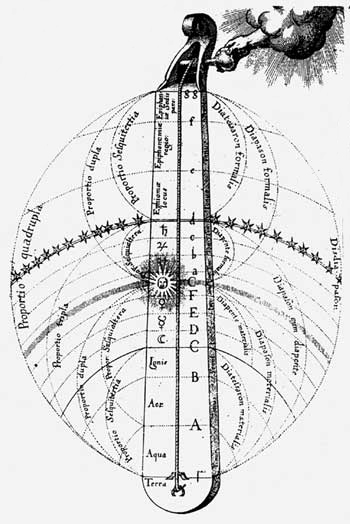
Drawn by
Robert Fludd, the Monochord invented by Pythagoras,
showing correspondences between pitch, proportion and astral bodies
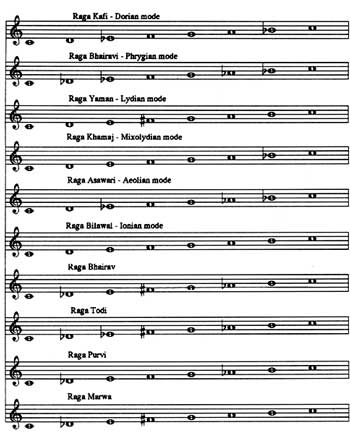
The 10
Thahts of Indian classical music and correspondence with some Western
modes:
1.Kafi/Dorian 2.Bharavi/Phrygian 3.Yaman/Lydian 4.Khamaj/Mixolydian
5.Asawari/Aeolian
6.Bilawal/Ionian 7.Bhairav 8.Todi 9.Purvi 10.Marwa
Universal Correspondences
I was first acquainted with universal correspondences in the mid-seventies by The Magus by MacGregor Mathers. It listed a series of correspondences based on simple numbers. I was particularly interested in the 'scale of number 7'. Seven-part hierarchies have inspired a number of my works, including The Soundless Sound and The Death of Don Juan, and recently Symphony 2001. I have also worked with 12-part hierarchies, particularly in The Gaia Cycle/Tronik Involutions and Existence.
What I see in the I Ching is quite different from how John Cage used it. He used the I Ching as a means to create chance events. I am using it as a structural device. There is no chance involved at all!
7-Tier Hierarchies
Example of a seven-tier hierarchy: The Scale of Number Seven Matrix
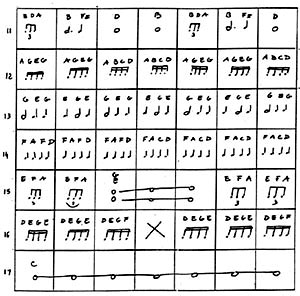
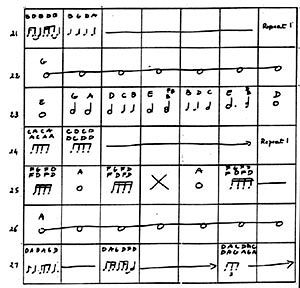
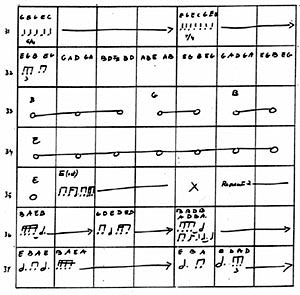
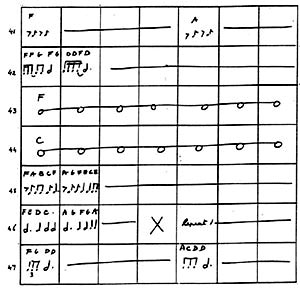
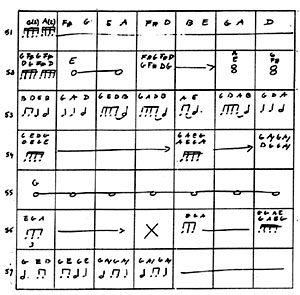
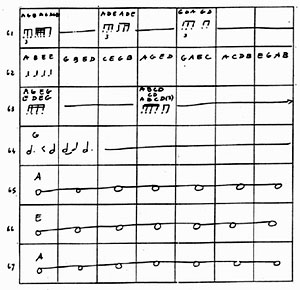

Matrix
of seven 7x7 pitch/rhythm grids used to create
the preliminary material for The Death of Don Juan
The patterns were programmed and orchestrated
on the Fairlight CMI computer at New York University
The resulting tape was used in combination with live performers
Example of a 7-tier hierarchy: the Rainbow Matrix from Symphony 2001
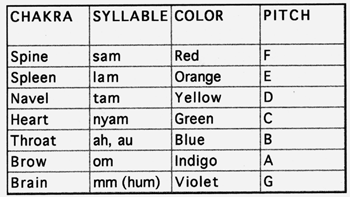

Correspondence between color vibration and pitch
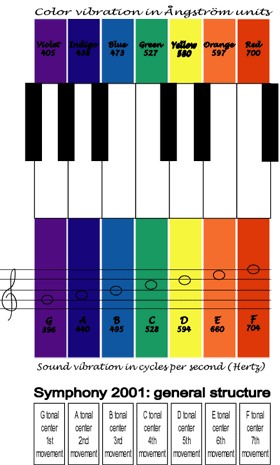
The
Rainbow Matrix
Each
of the 7 movements of Symphony 2001 corresponds to a color:
violet (G), indigo (A), blue (B), green (C), yellow (D), orange (E), red
(F)
Example of a 7-8 tier hierarchy: The Soundless Sound
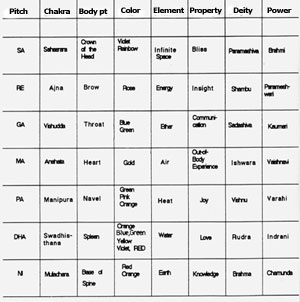
Chakras
and pitch correspondence table. Source: Sri Chinmoy
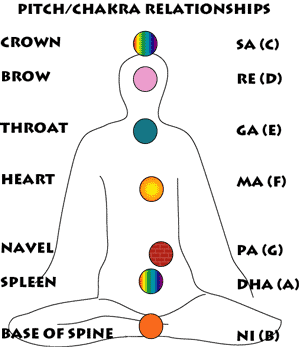
7-tier hierarchy based on the 7 chakras and 7 tones of diatonic scale
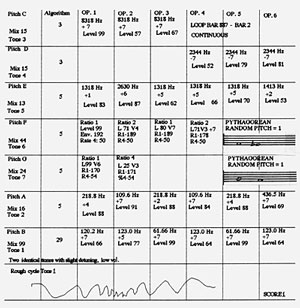
Electronic
Score, The Soundless Sound
The 7-tier hierarchy becomes 8-tier with the addition of limit-tones
(lowest and highest obtainable)
The 8-part hierarchy is synchronized with the 8 Primary Trigams of the I Ching
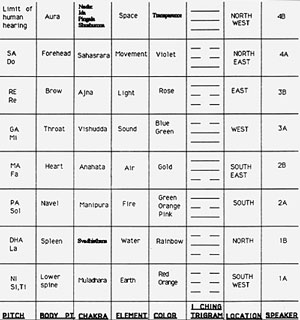
Further
correspondences with the Eight I Ching Primary Trigrams
determine the placement of sound sources for installation
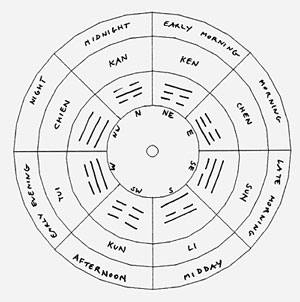
Correspondence
with the day cycle and the Eight I Ching Primary Trigrams
used to determine sound sequence
12-Tier Hierarchies
Example of a 12-tier hierarchy: The Gaia Cycle
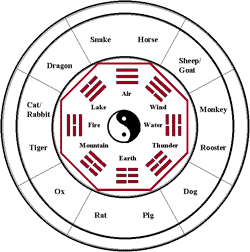
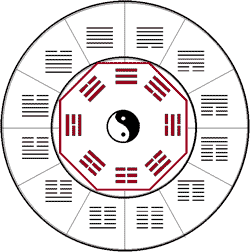
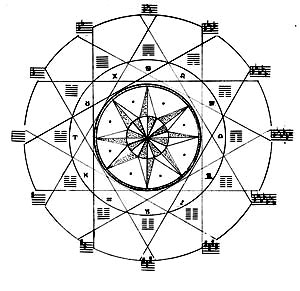
The
Gaia Cycle Matrix, organizing sequence and key signatures
in correlation with I Ching hexagrams and the 12-month cycle
A complete explanation can be found on the Electronic Music page
An example of 12-tier hierarchy: The SolarSys Matrix from Existence
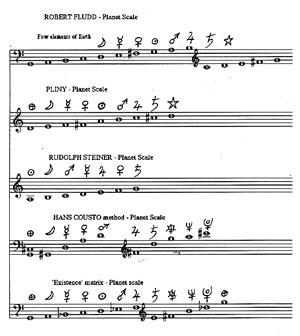
Various
planet-pitch correspondences by Robert Fludd,
Pliny, Rudolph Steiner, Hans Cousto
and Existence scheme
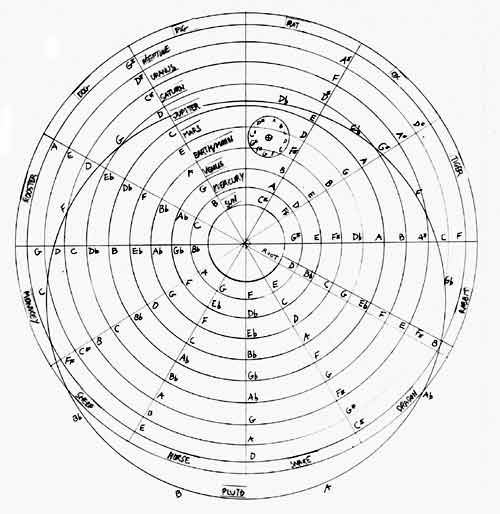
SolarSys Matrix for Existence

A
phoneme corresponds to each tone of the scale
This type of solfege is also used in The Living Temple and The
Empress
from The Deus Ex Machina Cycle
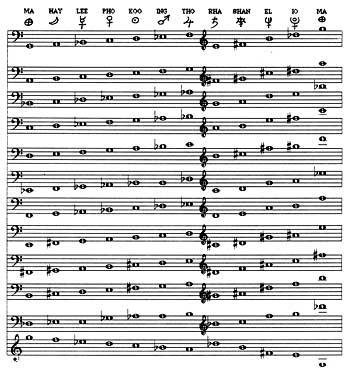
SolarSys Matrix, basic scale plot
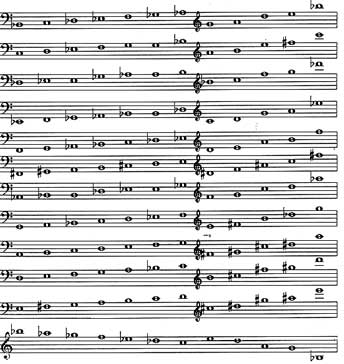
SolarSys Matrix, harmonic scale plot one minor third below
9-Tier Hierarchies
The
9-square or 3x3 spatial arrangement is often used by architects.
Based on the 9-square, this is the type of planet correspondence matrix
that was used in Inscapes from Exile, The Kepler Matrix
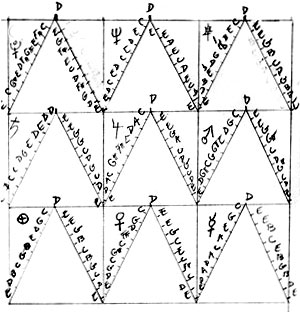
The
Kepler Matrix
Pluto, Neptune, Uranus
Saturn, Jupiter, Mars
Earth, Venus, Mercury
with pitch shown on the Trine score